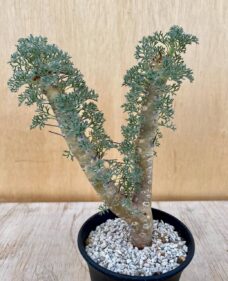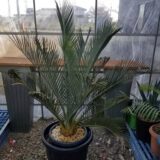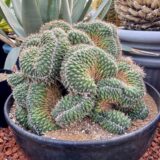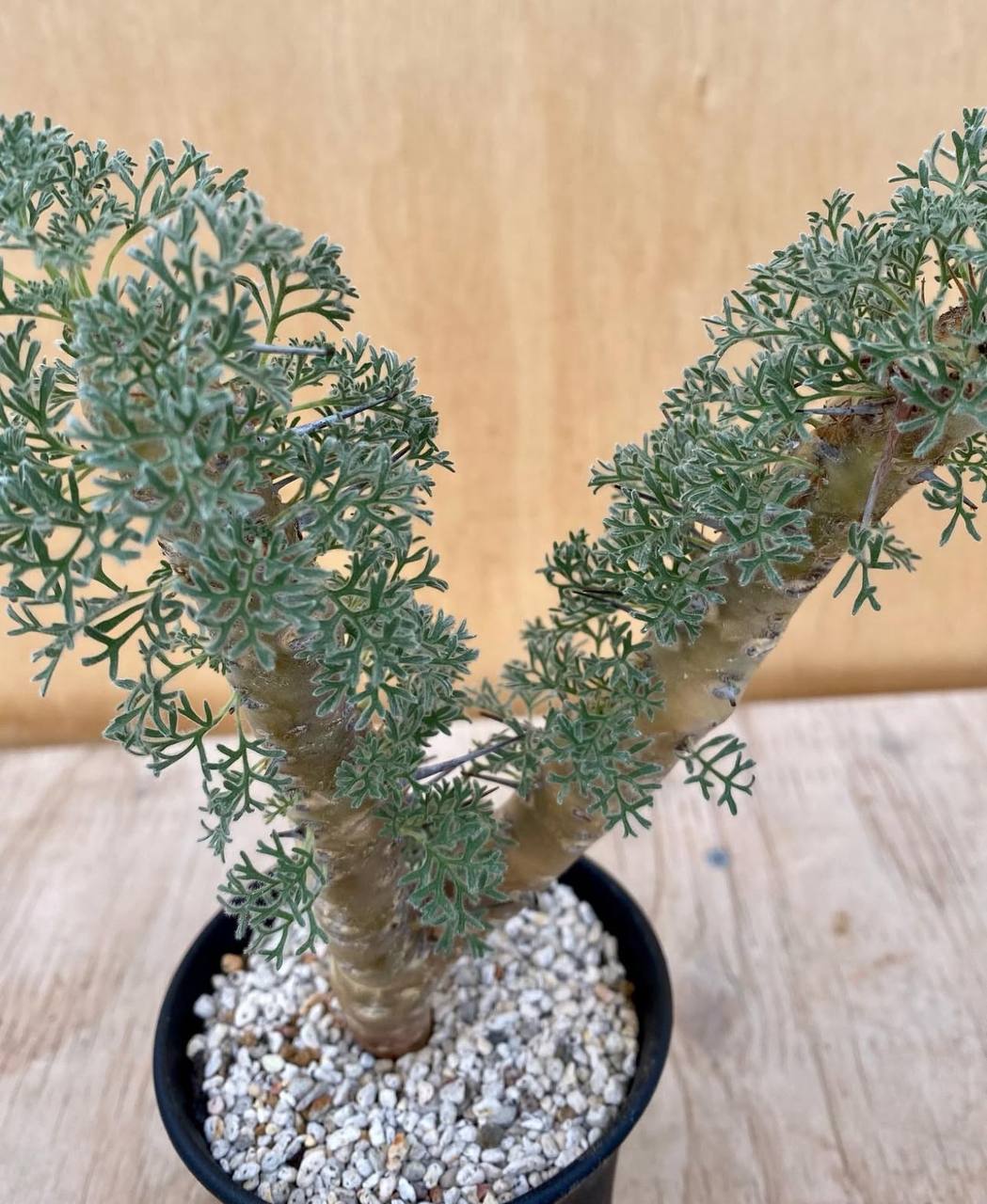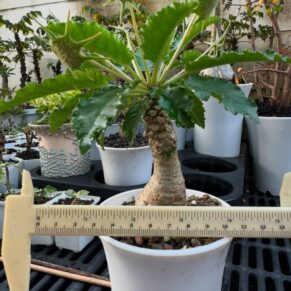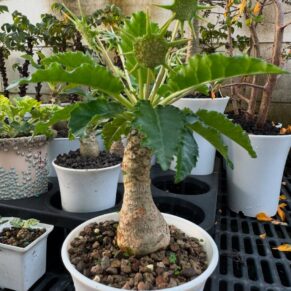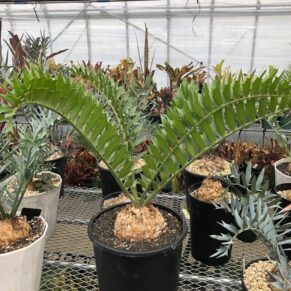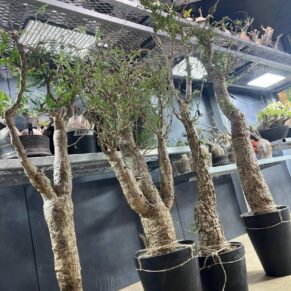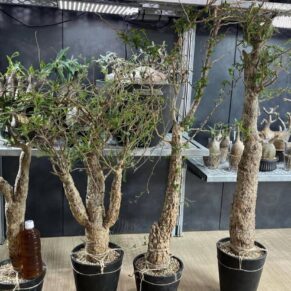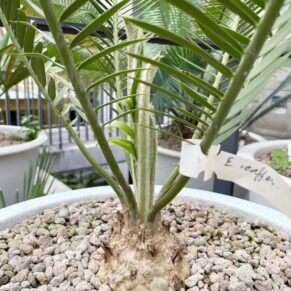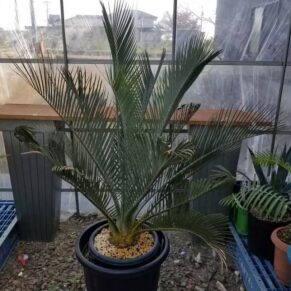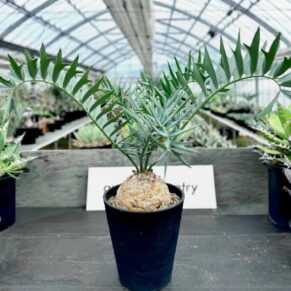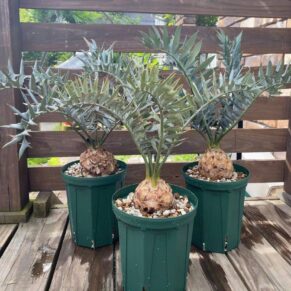Total $150.00
Shop
sarcocaulon herrei
Sarcocaulon herrei: The Enigmatic Bushman’s Candle
Sarcocaulon herrei, commonly referred to as the Bushman’s Candle, is a captivating succulent native to the arid regions of Northern and Western Cape in South Africa. Facebook group.Belonging to the Geraniaceae family, this plant is renowned for its unique appearance and resilience in challenging climates.Shop here:caudexplants.com
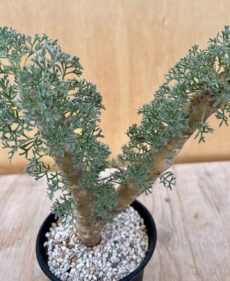
🌱 Botanical Profile
-
Scientific Classification:
-
Kingdom: Plantae
-
Order: Geraniales
-
Family: Geraniaceae
-
Genus: Sarcocaulon
-
Species: herrei
-
-
Synonyms:
-
Monsonia herrei (L. Bolus) F.Albers
-
Sarcocaulon lorrei Stiles
-
-
Common Names:
-
Bushman’s Candle
-
Herre’s Sarcocaulon
-
Corkbush
-
-
Origin: Indigenous to the Northern and Western Cape regions of South Africa, particularly thriving on arid quartz ridges and the west and northern slopes of mountains in Namaqualand.Shop here:caudexplants.com
-
Habitat: Prefers well-drained, gritty soils and full sun exposure, often found among fragments of white quartzite in its natural habitat.
🌿 Morphology and Growth
-
Size: Typically grows to a height of 5–25 cm and can spread up to 35 cm in diameter.
-
Stem: Features a thick, spiny, light-brown caudiciform stem, giving it a bonsai-like appearance.
-
Foliage: Deciduous with small, fleshy leaves that are green to bluish-green. Leaves are shed during the hotter months, conserving water.
-
Flowers: Produces striking white or pale yellow flowers resembling poppies, blooming in spring and winter.
-
Dormancy: Exhibits a dormant phase during the warmer months, shedding leaves to conserve moisture.
🌞 Cultivation and Care
Sarcocaulon herrei is well-suited for cultivation in arid and semi-arid regions, as well as in controlled environments like greenhouses and indoor spaces with adequate lighting .Shop here:caudexplants.com

🌞 Light Requirements
-
Thrives in full sun, requiring at least 6 hours of direct sunlight daily.
-
In indoor settings, place near south-facing windows to ensure sufficient light exposure.
💧 Watering
-
Water sparingly, allowing the soil to dry out between waterings.
-
During the growing season (autumn and winter), water approximately every 10 days, ensuring the soil is dry before rewatering.
-
Reduce watering significantly during dormancy (summer), only watering if the stem shows signs of wrinkling or excessive dryness.
🌱 Soil and Fertilization
-
Prefers well-draining, gritty soil mixes, ideally containing at least 75% pumice or lava grit.
-
Fertilize with a balanced, diluted liquid fertilizer every 4–6 weeks during the growing season.
-
Avoid fertilizing during dormancy to prevent nutrient buildup.
🌡️ Temperature and Humidity
-
Optimal growth occurs in temperatures above 20°C (68°F).
-
Tolerant of high temperatures and dry conditions but sensitive to frost.
-
Ensure good air circulation to prevent fungal diseases and rot.
🪴 Potting and Repotting
-
Suitable for container cultivation; use pots with drainage holes to prevent waterlogging.
-
Repot every 2–3 years or when the plant outgrows its container.
-
When repotting, gently remove the plant from its current pot, trim any dead or damaged roots, and place it into a new pot with fresh, well-draining soil.
🌿 Propagation Methods
Sarcocaulon herrei can be propagated through seeds or cuttings, allowing enthusiasts to expand their collection.
🌱 Seed Propagation
-
Sow seeds just under the surface of well-draining soil in seed trays or small pots.
-
Maintain temperatures around 25°C (77°F) and ensure humidity by covering the container with a plastic dome or bag.
-
Germination may take several weeks; keep the soil moist but not waterlogged.
-
Once seedlings have developed a robust root system, transplant them into individual pots.
✂️ Cutting Propagation
-
Select healthy, mature stems and cut them into 4–6 inch sections.
-
Allow cuttings to callous over for a few days to prevent rot.
-
Plant the cut ends into well-draining soil and water sparingly until roots develop.
-
Once established, treat them as mature plants, following standard care guidelines.
🌼 Uses and Ornamental Value
-
Ornamental Appeal: Its unique appearance and striking flowers make it a desirable addition to succulent collections and xeriscape gardens.
-
Bonsai Potential: The plant’s compact size and distinctive form lend themselves well to bonsai cultivation.
-
Cut Flowers: The attractive blooms can be used in floral arrangements, adding a touch of exotic beauty.
-
Hedge Plant: In suitable climates, it can serve as an informal hedge, providing structure and interest to landscapes.
🐾 Safety Considerations
-
Toxicity: Non-toxic to pets; however, ingestion of large quantities may cause mild gastrointestinal discomfort.
-
Handling: The spiny stems can cause minor skin irritation; handle with care.
🌍 Conservation and Sustainability
While Sarcocaulon herrei is not currently listed as endangered, its native habitat is subject to environmental pressures. Cultivating this plant in gardens and collections can contribute to its conservation by reducing the demand for wild specimens .Shop here:caudexplants.com
